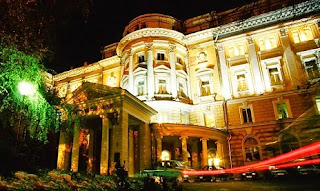Although he was affable and even simple in his dealings with friends, the German composer Richard Strauss did have a reputation for arrogance and pride. Life had favored him generously, from his birth in a wealthy and musically rich family environment where he never lacked for anything to the long existence he enjoyed without major setbacks. So, it is not surprising that he saw himself as an artist of privileged and exclusive talents, which, of course, he was quick to show early on.
At the age of 16, his First Symphony was premiered; at twenty his name reached North America with the premiere in New York of the Second Symphony. Five years later, the tone poem Don Juan opened the doors of the world's stages, and at the age of forty the opera Salome made him the most famous composer of his time... Richard Strauss, mature, had something to be proud of.
 |
| Richard Strauss (1864 - 1949) |
A difficult work
The benefactor, however, refused to study it. He claimed that the piano part was untouchable, especially for small hands, as was his case. Strauss agreed and put the piece aside for some time until in 1889 he met a Liszt pupil, the pianist Eugen d'Albert, who suggested some changes that Strauss gladly took up. The piece, dedicated this time to d'Albert, and renamed Burlesque, was premiered in Eisenach, Bach's birthplace, on June 21, 1890.
Burlesque for piano and orchestra
With a novel orchestration, the work gives an important participation to the timpani. Its title refers to its parody character, in the style of mid-century burlesques intended to mock some other work, usually an opera.
The rendition is by the Berlin Philharmonic, with Martha Argerich at the piano and Rainer Seegers on timpani, conducted by the late Italian maestro Claudio Abbado.






























